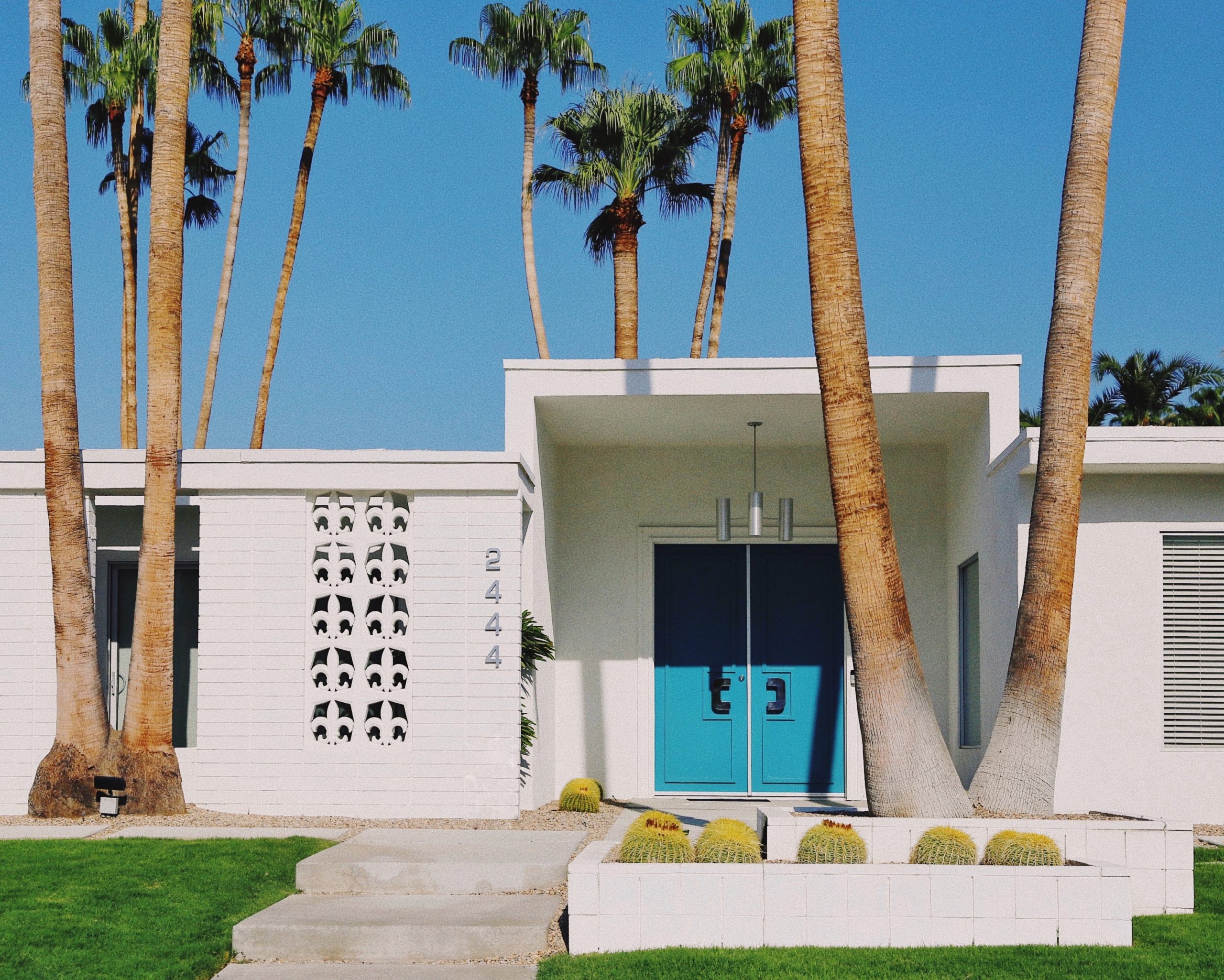
Xeriscaping: What Is It & Does It Work In Florida?
 Michael Tomaino
Michael Tomaino
Xeriscaping.
It’s a big, fancy word, but listen, if you’re intimidated, don’t be—xeriscaping might sound super complex and intricate, but trust us, once we explain it, you’ll be a xeriscaping expert in no time.
Our definition of xeriscaping: Xeriscaping is a unique process of landscaping or gardening that focuses primarily on eliminating the need for supplemental water or extra irrigation that doesn’t naturally occur.
You’ve probably heard this buzzword before. Currently, xeriscaping is a hot trend in landscaping—both in residential and commercial realms. And honestly? We get it. Xeriscaping is a trendy, cool-looking way to landscape and, more importantly, it doesn’t require a ton of irrigation to get the job done.
The best, immediate example we can give you of xeriscaping is an elaborate home in Arizona that’s full of cacti, forgoes green, and looks delightfully desert themed. But we don’t love that example of xeriscaping because we think it sort of puts limitations on what xeriscaping really is. You don’t have to live in the desert to xeriscape, and more importantly, there’s no one, specific way to xeriscape.

In fact, you can even have green, turf, plants, flowers, etc. in your xeriscape landscape—it’s all about following along with the guiding principles. Not sure what those are? Don’t worry, we’ll dive into them in just a moment.
First, though, let’s have a quick chat about the basic definition of xeriscaping so we can all lay down a firm foundation of the type of landscaping we’re looking at.
What Exactly is Xeriscaping?
Xeriscaping, like other types of landscaping processes, doesn’t look one particular way. So, we can’t always point to a pretty picture of something and say, “look, this is what xeriscaping looks like.”
Because, often, xeriscaping looks different in different capacities and circumstances.
What we can do is give you a definition that can help you better understand the process. So, as we stated above, here’s our official-un-official definition for you:
Xeriscaping is a unique process of landscaping or gardening that focuses primarily on eliminating the need for supplemental water or extra irrigation that doesn’t naturally occur.
Typically, this means that xeriscaping is punctuated by the use of low-water-use and very drought-tolerant plants that won’t require any extra irrigation. While there’s no right or wrong way to create a xeriscape, you’ll often see xeriscapes filled with gravel, dirt, sand, or few plants.
The Big Question: Is xeriscaping possible in Florida?
Though many people think that xeriscaping is only popular in high-desert or drought-ridden areas, it’s actually becoming a growing landscaping trend all over the place no matter what the climate might be. Which means, yes, xeriscaping is possible in Florida.

The Guiding Principles of Xeriscaping
Xeriscaping is unique because it is said to have seven main principles—as long as you’re abiding by these principles relatively stringently, you’re in the clear to consider your Florida landscape a xeriscape.
As we said, xeriscaping is all about using water wisely, so take note of how each of these seven principles focuses on that at its core.
Perfect Planning and Detailed Design
Xeriscapes can’t happen without a plan. Well, not really, anyway. You’ll need to consider cost, aesthetics, maintenance requirements, water use, and energy efficiency.
Soil Improvement
What’s going on with your soil matters—especially with this type of landscaping. A xeriscape can’t function properly without well-balanced soil. Adding in amendments to build nutritional content when needed is essential for creating a strong foundation for healthy plants that need less water. Just make sure you’re choosing a turf or grass that requires a lot less irrigation.
Practical Turf Areas
Be mindful of your turf! Plant grass or turf in the appropriate places on your Florida xeriscape—see, it doesn’t have to be totally turf-less to be considered a xeriscape. There’s room for a little lushness.
Efficient Irrigation
Water smart, water deeply, and water accurately! Xeriscapes don’t require zero water, but they do require a lot less irrigation, so when you do irrigate, make sure you’re doing so properly.
Mulching
Mulch can help soak up the little irrigation your xeriscape does get. This can help you retain water and nutrients in the soil and mitigate the risk of nasty things like weeds and erosion.
Low Water-Use Plants
It’s a common misconception that you can’t have any plants in your xeriscape. Of course, you can! Just make sure they’re drought-tolerant and don’t require much water at all. Plant with a purpose!
Landscape Maintenance
Like any other landscape, xeriscapes require maintenance. Sure, they might not require stringent maintenance, but you can’t leave them be and expect them to remain prim, pruned, and proper without at least a little intervention.
Ask Landcrafters for Xeriscaping Advice in Tampa Bay
Thinking about your own landscape and wondering if its time to insert a little xeriscaping into your life? We don’t blame you. Like we said, xeriscaping is pretty dang cool—and something we’re proud to accomplish with you! For quotes, answers to questions, or just some billowing brainstorming sessions, we highly encourage you to reach out to Landcrafters—let’s get the ball rolling!
Give us a call at (727) 493-7123 or reach out to us directly via our contact page. If you're ready to take the next step, you can also request a consultation.

Michael Tomaino
Head Gardener for Landcrafters, Inc. Michael Tomaino, a cornerstone of Landcrafters since its inception, oversees all aspects of business operations with a wealth of experience. With years of adept team management and leadership under his belt, coupled with a robust educational background, both within and beyond the industry, Michael is dedicated to steering Landcrafters towards becoming the foremost landscape management provider in the Tampa Bay Area.

